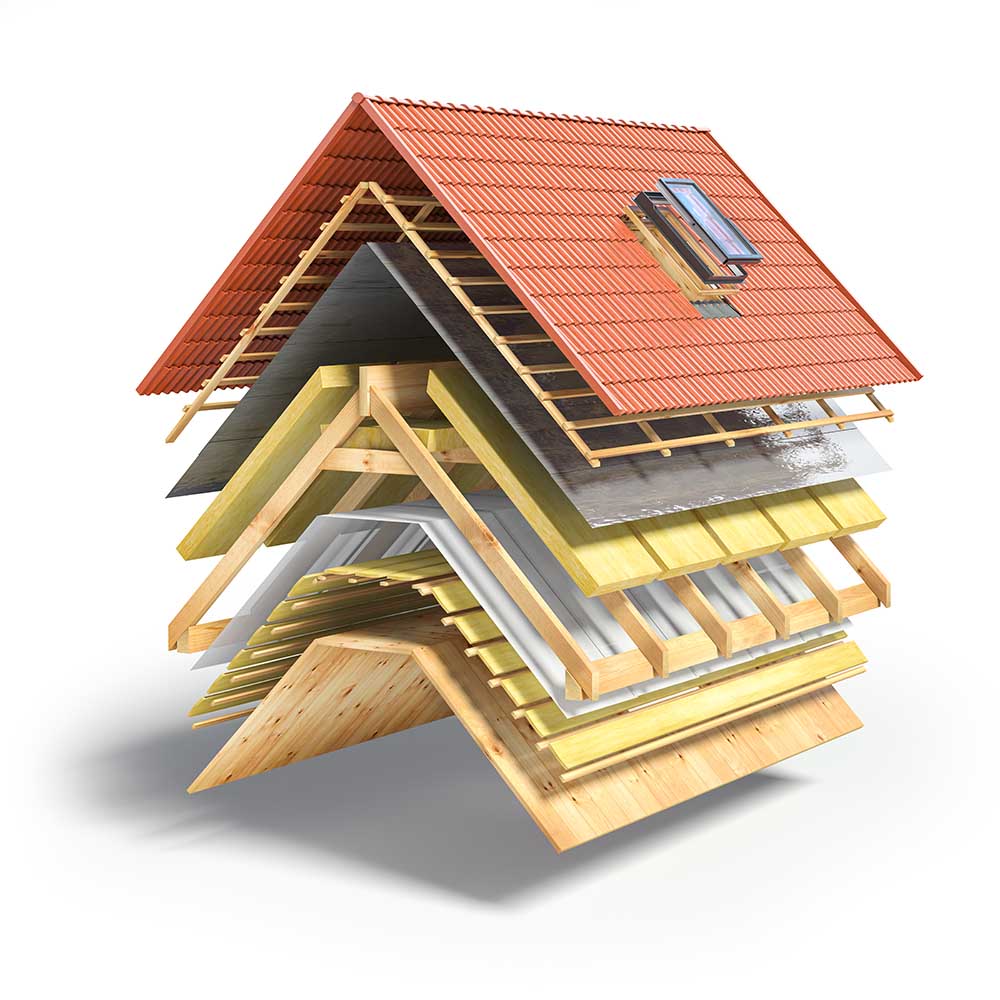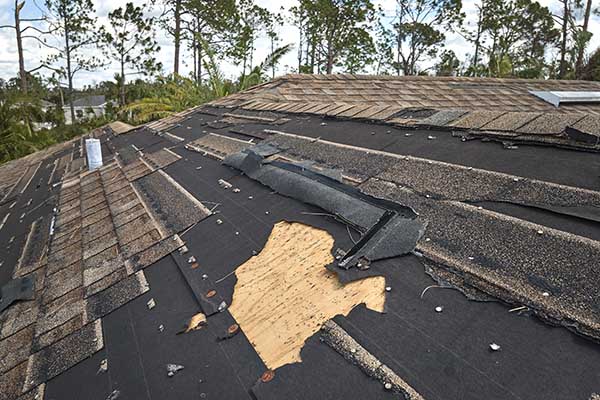The Science of Roof Leaks: How Water Finds Its Way into Your Home
Find out why your roof leaks and how we can help!
Leave Roof Repairs to the Pros
A leaking roof is one of the most frustrating and potentially damaging problems a homeowner can face. What may seem like a small drip on the ceiling could be a symptom of a much larger issue hidden within your roof’s structure.
Understanding how water infiltrates your home, where it originates, and how to effectively repair the issue can help prevent costly damages and structural deterioration.
In this comprehensive guide, we’ll explore how roof leaks develop, the science behind water infiltration, the hidden paths water takes inside your home, and how to get roof repair for leaks before they cause extensive damage.
Understanding How Roof Leaks Develop
Roof leaks don’t appear overnight. They result from gradual wear and tear, external damage, or faulty installation. Here’s how leaks commonly begin:
Aging and Weathering
Over time, exposure to the elements breaks down roofing materials. Asphalt shingles, for instance, lose their protective granules, making them susceptible to moisture penetration. Wood shingles can crack or rot, and metal roofing may develop rust spots or weakened seams.
- UV Radiation: Constant sun exposure causes shingles to dry out and become brittle.
- Temperature Fluctuations: Expansion and contraction from seasonal changes weaken materials over time.
- Wind and Storm Damage: Strong winds can loosen shingles or lift flashing, allowing water to seep in.
Poor Installation or Maintenance
A poorly installed roof is far more likely to develop leaks. Some common installation errors include:
- Improperly nailed shingles – Leaving gaps where water can penetrate.
- Faulty flashing installation – Flashing should be properly sealed at roof joints, chimneys, and vents.
- Inadequate roof slope – A roof that doesn’t have proper drainage can trap water.
Routine maintenance, such as clearing gutters and checking for missing shingles, and roof repair can prevent minor issues from turning into serious leaks.
Clogged Gutters and Drainage Issues
Gutters direct water away from the roof, but when they become clogged with leaves, debris, or ice, water can pool and seep under shingles. Over time, this constant moisture weakens the underlayment and allows water to enter the attic.
Ice Dams in Cold Climates
In winter, ice dams form when snow melts on the upper part of a roof but refreezes at the eaves, preventing water from draining properly. This trapped water eventually finds its way under shingles, leading to leaks.
Cracked or Failing Flashing
Flashing seals joints and penetrations in the roof, such as around chimneys, skylights, and vents. When flashing becomes cracked, corroded, or dislodged, water enters through these vulnerable points.
The Science of Water Infiltration: How Leaks Spread
Water has a remarkable ability to travel in unexpected ways. Understanding how water moves through a structure is key to identifying the true source of a leak.
Capillary Action: Water’s Ability to Travel Upward
One of the most deceptive characteristics of water is capillary action—the ability for water to move against gravity through small crevices or porous materials. This means a leak originating from the roof can travel upward inside walls or insulation before becoming visible in unexpected places.
Gravity: The Path of Least Resistance
Water follows gravity, which means it rarely drips straight down from where it enters. Instead, it may flow laterally along beams, rafters, and insulation before appearing as a leak in a different location—often far from the actual damage.
Wind-Driven Rain
During storms, strong winds push rain sideways, allowing water to enter small cracks and crevices that wouldn’t typically be a problem under normal conditions. Roof valleys, vents, and improperly sealed seams are particularly vulnerable to wind-driven rain infiltration.
Moisture Wicking in Insulation
Roof leaks don’t just affect the exterior of a home; they also saturate insulation in the attic or walls. This moisture can spread horizontally before it drips, making it difficult to pinpoint the exact entry point of the leak.

How to Identify and Locate Roof Leaks
Finding the true source of a leak is often the most challenging part of roof repair. Here are effective strategies for tracking down leaks:
Interior Signs of Roof Leaks
Check for these visible symptoms inside your home:
- Water stains on ceilings or walls – Brownish discoloration often indicates long-term leakage.
- Peeling paint or bubbling drywall – Moisture trapped behind walls causes paint to lift.
- Mold or mildew growth – Persistent leaks create an ideal environment for mold.
- Musty odors in the attic – Damp insulation emits a strong, musty smell.
Attic Inspection
Climbing into the attic during or after heavy rain can help identify leaks. Use a flashlight to look for:
- Dripping water or damp rafters
- Dark stains or streaks on wood
- Daylight visible through the roof (indicating gaps or missing shingles)
Exterior Roof Inspection
A visual check of the roof may reveal damage leading to leaks:
- Missing, cracked, or curled shingles
- Damaged or corroded flashing
- Clogged gutters causing water buildup
Using a garden hose to simulate rain can also help locate leaks, but be cautious when walking on the roof.
Repairing Roof Leaks: DIY vs. Professional Fixes
Some minor leaks can be addressed by homeowners, but others require professional intervention.
Temporary DIY Fixes
For small leaks, short-term solutions may help prevent further damage until professional repairs can be made.
- Apply roofing sealant to small cracks or gaps.
- Use a tarp to cover damaged areas until a roofer arrives.
- Clear gutters and downspouts to improve drainage.
When to Call a Professional
For major leaks or structural damage, professional roof repair is the safest option. A roofing expert can:
- Perform a thorough inspection to identify all problem areas.
- Replace damaged shingles, underlayment, and flashing.
- Ensure proper ventilation and drainage to prevent future leaks.
Attempting DIY repairs on major leaks can lead to further damage, void warranties, and even pose safety risks.
The Cost of Ignoring a Roof Leak: What Happens If You Wait Too Long?
A small roof leak might seem like a minor inconvenience, but ignoring it can lead to significant financial and structural consequences. Water is one of the most destructive forces in a home, and even a slow leak can cause a domino effect of damage. Here’s what happens when a roof leak is left unaddressed for too long.
Structural Damage Worsens Over Time
What starts as a small drip can quickly spread through your home’s framework. Over time, water weakens the structural integrity of wood beams, roof decking, and ceilings. If the problem isn’t caught early, homeowners may face costly repairs or even partial roof collapse.
- Roof Deck Rot: Prolonged exposure to moisture causes the wooden decking under the shingles to rot, compromising the entire roof system.
- Ceiling & Wall Damage: Water seeps into the walls, softening drywall, causing it to warp, bubble, or even crumble.
- Flooring Issues: If leaks reach lower levels, they can damage hardwood floors, carpets, and subflooring.
Mold and Mildew Growth
A moist environment is the perfect breeding ground for mold and mildew. As water infiltrates insulation, wood, and drywall, mold spores multiply, spreading throughout the home.
- Health Risks: Mold exposure can cause respiratory issues, allergic reactions, and worsen conditions like asthma.
- Expensive Remediation: Mold removal costs can range from hundreds to thousands of dollars, depending on how widespread the infestation becomes.
Increased Energy Bills
A compromised roof can cause insulation to deteriorate, making it harder to maintain indoor temperatures. This leads to higher heating and cooling costs, as air escapes through gaps and damaged areas.
- In winter, heat escapes, forcing your heating system to work harder.
- In summer, cool air leaks out, increasing air conditioning costs.
Pest Infestations
Holes and weakened areas in your roof create entry points for rodents, insects, and birds. Once inside, they nest in insulation, chew through wires, and leave droppings, causing additional hazards.
Why Timely Roof Repairs Save You Money
The longer you wait to fix a leak, the more expensive the repair becomes. What could have been a $200 minor repair might escalate into a $5,000+ roof replacement if left unchecked. Catching issues early prevents bigger problems and saves homeowners thousands in potential damage.
How Seasonal Changes Affect Roof Leaks and Repairs
Your roof experiences different stresses throughout the year, making it more vulnerable to leaks during certain seasons. Understanding how changing weather conditions impact roofing materials can help homeowners anticipate problems and schedule timely repairs.
Spring and Summer: Rain and Heat Stress
Heavy spring rains can expose pre-existing weak spots in your roof, leading to leaks that weren’t noticeable in dry weather.
- Water Ponding: Flat or low-sloped roofs are especially vulnerable to standing water, which can degrade roofing materials over time.
- UV Damage: Prolonged exposure to the summer sun causes roofing materials to dry out, become brittle, and crack.
Solution: Have your roof inspected before the rainy season to ensure there are no hidden vulnerabilities. Applying a protective roof coating can help reflect UV rays and extend the life of your roof.
Fall: Preparing for Harsh Weather
Autumn is a crucial time for roof maintenance. Leaves and debris clog gutters, causing water to back up and seep under shingles.
- Wind Damage: Fall storms with strong winds can loosen shingles, flashing, and roof tiles.
- Gutter Blockages: If gutters overflow, water can infiltrate your roof and siding, leading to leaks.
Solution: Clear your gutters before winter and secure any loose shingles or flashing to prevent wind-related damage.
Winter: Snow and Ice Damage
Cold weather presents unique challenges that accelerate roof wear and tear.
- Ice Dams: When heat from the attic melts snow on the roof, refreezing at the eaves creates ice dams. These force water under shingles, leading to leaks.
- Heavy Snow Load: Excessive snowfall adds weight, which can strain the roof structure and cause sagging.
Solution: Improve attic insulation and ventilation to prevent uneven melting and ice dam formation. If you live in an area with heavy snowfall, consider installing a snow guard or a roof heating system.
When Is the Best Time for Roof Repairs?
Spring and fall are ideal seasons for roof repairs, as weather conditions are more stable. Summer is also suitable but can be challenging due to extreme heat affecting roofing materials. Winter is the riskiest time for repairs, but necessary emergency fixes should never be postponed.
By staying proactive and addressing seasonal challenges, homeowners can prevent leaks before they happen and avoid expensive, unexpected roof repairs.
Preventing Future Roof Leaks: Long-Term Solutions
Regular maintenance and preventative measures help extend the lifespan of your roof and prevent costly leaks.
Schedule Annual Roof Inspections
Having a professional inspect your roof once or twice a year can catch small issues before they become expensive repairs.
Keep Gutters and Downspouts Clear
Regularly removing leaves and debris prevents water from pooling and seeping under shingles.
Upgrade to Impact-Resistant Materials
If your roof is aging, consider replacing it with high-quality, weather-resistant materials, such as:
- Metal roofing for wind and hail resistance
- Architectural shingles for durability
- Waterproof underlayment for added protection
Ensure Proper Attic Ventilation
Good ventilation prevents moisture buildup and ice dams in winter, which can cause leaks.
Address Small Issues Immediately
If you notice loose shingles, cracked flashing, or minor leaks, addressing them quickly prevents them from escalating into bigger problems.
Stay Ahead of Roof Leaks
Understanding how roof leaks form, spread, and impact your home is essential for maintaining a durable and efficient roof. While minor leaks can sometimes be patched, a professional inspection ensures that underlying issues are properly addressed.
By staying proactive with routine maintenance and high-quality roofing materials, you can protect your home from water damage, structural decay, and expensive roof repairs. If you suspect a leak, don’t wait—taking action early can save you thousands in potential damage.


